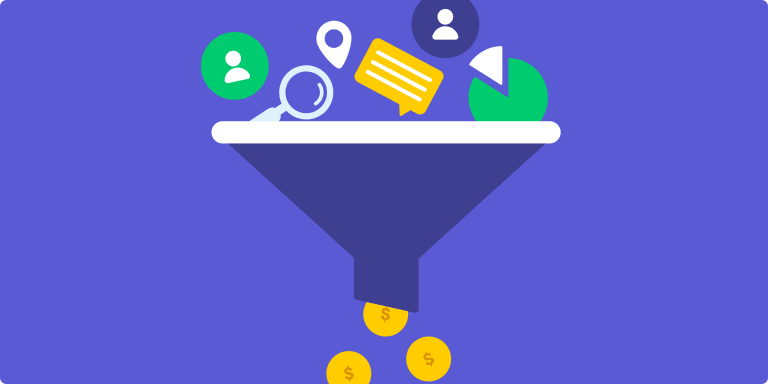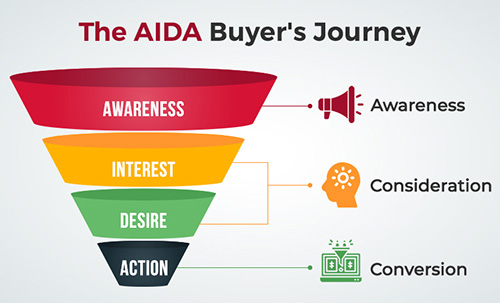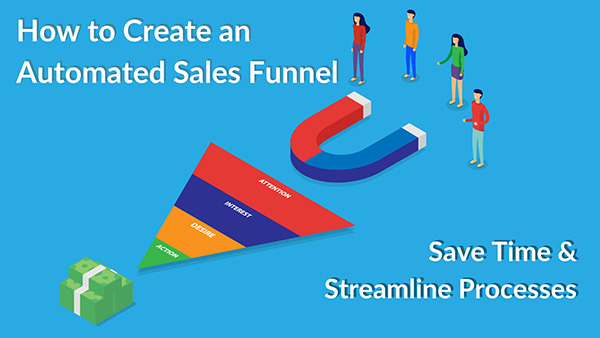Every business owner dreams of getting maximum sales, and to accomplish that dream they try different methods and strategies. However, it’s not necessary that using a lot of strategies will deliver them tonnes of sales. It is imperative to study in detail the psychology of a consumer. If we can figure out how a customer’s brain processes before making a purchase, it means we have achieved 50% of our goal! Now for achieving this goal to the full extent, we must be familiar with the concept of the sales funnel.
What is a sales funnel?
Invented by E St Elmo Lewis, the first formal theory of marketing, ie., sales funnel is a process through which we approach our audience in a planned way to make them purchase our goods or service. It is a marketing concept that depicts the journey a customer takes when making any type of purchase. This model is called a “funnel” because it starts with a large number of potential customers and filters them out with each step, leaving only a small fraction at the end of what was at the beginning, thus acting as a funnel.


Need of a sales funnel
No one is willing to do business with a stranger, they simply can’t trust them. Sales funnels tackle this problem by gradually introducing a cold audience to our product and then ultimately make sales after they gain confidence in the product.
One of the biggest mistakes for a business can be selling the product to customers directly. Not only is it a shot in the dark but also an inefficient & costly way to expect sales. Sales funnel, on the other hand, filters out the audience which is willing to make a purchase saving our effort and money.
Stages of a sales funnel
The sales funnel comprises 4 stages or levels and works on the AIDA model. This funnel studies the stages that a customer goes through before making the final purchase which is as follows.
- Awareness: As the name suggests, we have to create awareness in this stage about our offerings. Creating awareness, not only makes people familiar with our product but also helps us determine the actual market potential.
Click here to spread awareness about your business! - Interest: After creating awareness considering the market potential, there will be some people who might be interested in our product. These people will be a fraction of the audience that was in stage 1 and are often referred to as “suspects” because it’s ambiguous whether they will buy or not.
- Desire: After looking at the people who are interested in our offerings, we will now filter out those who have a willingness to avail it and these are the “prospects” that will be most useful for us as they comprise our actual customer base. Now we have to inculcate a strong desire for availing our offerings in our prospects.
- Action: Clearing all the stages, now we finally have all the “customers” who ultimately purchased the product taking an exit from the sales funnel.

How to create a sales funnel?
Now then, after getting a hang of the concept of the sales funnel, it is time to create an effective one! Let us look at how to create a sales funnel now.
- Step 1 – First and foremost thing is to analyze our audience’s behavior. The more information we have about our target market, the more productive our sales funnel will be. We’re not trying to sell to everyone. We’re reaching out to people who are a better match for what we have to offer.
- Step 2 – To make our funnel work, we must know how to grab people’s attention. For this, we have to put content in front of our target audience with infographics, videos, ads, or any other type of organic/inorganic content.
- Step 3 – Our ad or other material should lead our prospects to our landing page with an irresistible offer (add CTA). Thus, if you do not have a good landing page, you have to create a landing page now! For now, we should focus on acquiring leads rather than pushing the sale as these people are still short in the sales funnel.
- Step 4 – Next up we have to nurture our audience by providing them with good content, like educating them about our product needs, solving their problems, and ultimately convincing them to buy.
- Step 5 – Even after we sell the product, we have to stay in touch with our audience and be grateful to them. Doing this will improve brand loyalty and increase repeated buyers.

